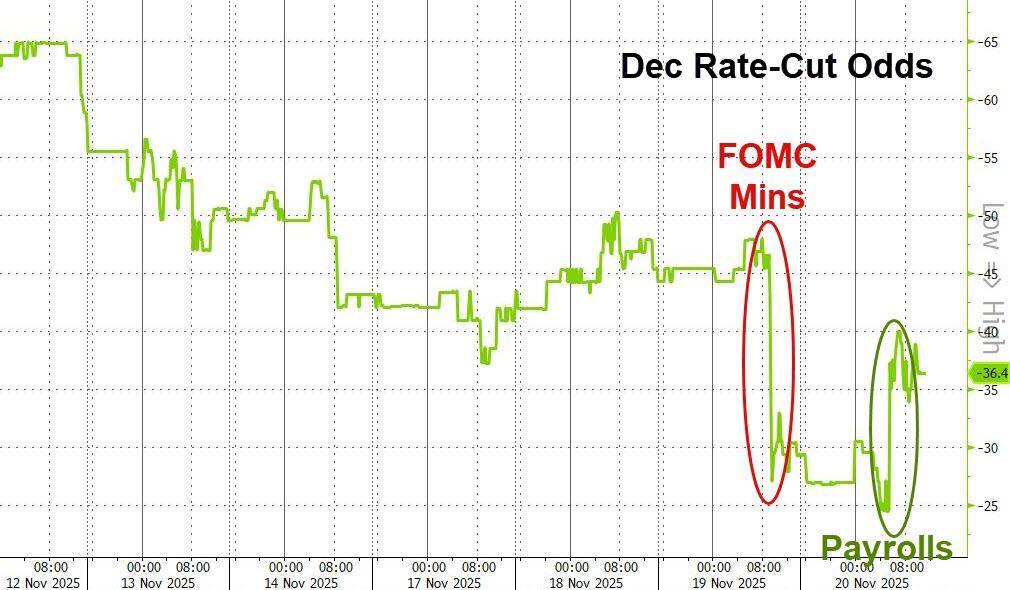Analysis suggests that when positive news fails to drive the market up, it itself becomes a strong bearish signal, triggering large-scale profit-taking and technical selling in the U.S. stock market.
Last night, Nvidia's better-than-expected earnings report combined with "Goldilocks" non-farm payroll data (new jobs exceeded expectations but the unemployment rate rose), created a double positive.
The three major U.S. stock indices opened significantly higher, with the S&P 500 index briefly exceeding 1.4%, and the Nasdaq index soaring 2.18%.
However, by the end of the trading session, all indices suffered heavy losses, with the S&P 500 index closing down 1.56% and the Nasdaq index plummeting 2.16%.

This situation has only occurred twice before: on April 7, 2020 (after the impact of the COVID-19 pandemic) and on April 8, 2025 (after the impact of Trump’s tariffs).
Nvidia's earnings boost was short-lived, also experiencing a sharp drop after a strong opening: after rising over 5% during the day, it closed down 3%. The Philadelphia Semiconductor Index turned from a significant morning gain to a nearly 4.8% drop at the close.

Analysis suggests that when positive news fails to drive the market up, it itself becomes a strong bearish signal, triggering large-scale profit-taking and technical selling in the U.S. stock market.
U.S. stocks experienced the largest intraday reversal since the April tariff storm
Before the market opened, the September non-farm payroll report showed an increase of 119,000 jobs, significantly exceeding market expectations. However, the unemployment rate unexpectedly rose to 4.4%, the highest level in four years. The "mixed" data indicates that while the job market still shows resilience, the rise in unemployment has increased expectations for future interest rate cuts.

In the early trading session, buoyed by the "Goldilocks" non-farm data and Nvidia's strong earnings report, the three major indices opened significantly higher.
By midday, Bitcoin fell below the $90,000 mark during U.S. trading, dropping more than $5,000 in a single day, triggering a sell-off of high-risk assets.
Additionally, Federal Reserve Governor Cook warned that risks in the private credit market could spread to the entire financial system.
Nick Timiraos, a well-known financial journalist referred to as the "new Fed correspondent," wrote that the September non-farm payroll report is unlikely to help the Federal Reserve reach a consensus on whether to pause interest rate cuts next month.
Optimism turned to turmoil, and U.S. stocks experienced a significant reversal from their initial gains. All three major U.S. stock indices turned negative and continued to widen their losses.
Ultimately, the S&P 500 index closed down 103.40 points, a decline of 1.56%, at 6538.76 points.
The Dow Jones Industrial Average closed down 386.51 points, a decline of 0.84%, at 45752.26 points.
The Nasdaq index closed down 486.181 points, a decline of 2.16%, at 22078.048 points.
Market questions Nvidia: "The 'shovel seller' won't say there are no gold nuggets in the mountains"
Despite Nvidia's third-quarter revenue soaring 62% year-on-year to $57.01 billion and providing strong guidance for the fourth quarter, investor concerns about an AI valuation bubble have not completely dissipated.
On Thursday, Nvidia's stock price reversed and fell during the trading session, after the company's better-than-expected earnings report had initially pushed the stock price up by 5%.
After the earnings report was released, stocks related to the AI ecosystem, including AMD and Broadcom, were initially boosted but then fell back with the broader market.
Nvidia CEO Jensen Huang candidly stated during the earnings call: There is a lot of discussion about an AI bubble, but from our perspective, the situation is entirely different.
However, this defense is seen as inevitable by some market observers.
Analysis suggests this is akin to a hardware store owner during a gold rush, who would never tell gold miners, "There are actually no gold nuggets in the mountains." Even if an AI boom truly exists, as the biggest beneficiary, Huang would not admit it.
Investor concerns about the AI bubble are not focused on this quarter or the next few quarters, but rather on whether capital expenditures can continue to grow one or two years down the line. These massive investments ultimately need to yield returns.
History provides a reference case. During the internet bubble, Cisco, as a global network equipment provider, was one of the most important "shovel sellers." Although Cisco's revenue growth did not reach Nvidia's current level, it was still quite strong and even accelerated at one point, until it plummeted after the internet bubble burst.
Nvidia has now announced a quarterly dividend of $0.01. Based on the pre-market price of $195.60, shareholders would need nearly 4,900 years to recoup their costs solely from dividends.
Analysis suggests that if AI investment is indeed a difficult-to-sustain bubble, one cannot expect Huang to admit it, nor will it be evident from Nvidia's current performance or short-term outlook. The path of slowing growth will determine the trend of AI-themed stocks, but the causal relationship may also be the opposite—stock price fluctuations may in turn affect investment decisions.
免责声明:本文章仅代表作者个人观点,不代表本平台的立场和观点。本文章仅供信息分享,不构成对任何人的任何投资建议。用户与作者之间的任何争议,与本平台无关。如网页中刊载的文章或图片涉及侵权,请提供相关的权利证明和身份证明发送邮件到support@aicoin.com,本平台相关工作人员将会进行核查。




